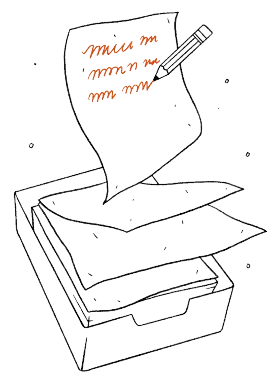
July 9: Day 4: Chapters 13-18, pages 74-109.
We invite you to consider the following for Chapters 7-12, pages 40-73<br>What resonates with you as a reader? What do you think will resonate with your students?<br>How might you engage your students in this section of the novel?<br>What activities, teaching points, discussion questions might you use?








In chapters 13-15, readers see Josef, Isabel and Mahmoud moving forward in their journeys. Along the way, each character experiences something that reaffirms life continues even when far away from home. For example, Josef celebrates his Bar Mitzvah (in spite of his father's absence and Hitler's image having to be removed). Isabel gets to know the others on the boat more and they participate in a sing-a-long. Mahmoud notices a wedding procession amid the influx of refugees in Turkey. I think it would be a good time to discuss why the author made the decisions to write about these moments. One might explore the significance of a Bar Mitzvah if students live in an area where Judaism isn't practiced regularly. I think these chapters are create an excellent opportunity for students to explore their own traditions--whether these pertain to coming of age or not. What special traditions do students share with their families? In order to be sensitive to students who may have living situations that are not ideal, you might ask students to write or journal about what traditions they want to start with their friends and/or future families. By the end of Chapter 18, the rollercoaster up and downs have come into focus for Isabel, Josef and Mahmoud again. Now would be a good time to discuss character traits. What do the three have in common when it comes to coping? How are they different? Extend that question to their family members. Consider the difference in coping skills between Mahmoud's brother and his father. Ask students to journal or discuss how they cope with stressful, sad, or scary situations. Some vocabulary that may need review before the reading include words such as: deserters, infidels, hijab, Shabbos. Perhaps instruct teams/groups to create a vocabulary poster as they read.
I just had a moment while rereading these six chapters -- something I realize that I cannot believe I did not pick up on before -- which is the interconnectedness of place in these stories. Mahmoud is traveling from Syria to Germany; Joseph is traveling to Cuba from Germany, and Isabel is traveling from Cuba to the USA. This makes me think again about the idea of having a classroom map of the journeys that these three characters are undertaking as the book is being read. Additional themes that came up in these chapters are uncertainly, sacrifice, and urgency. I also noticed again how Gratz establishes motifs and uses them to connect the three stories, like the broken glass I mentioned in an earlier post. Here, music appears in the stories in meaningful ways. The last two years, I have had students create one pagers about their books in interesting ways. This has me thinking about a variation on this to use with Refugee. I can imagine giving students an organizer with a box for each chapter in the book. Within each box would be space for them to sketch an image or a symbol that is significant for the chapter and write an important / significant quote from the chapter. These could then be a tool for talk with peers in discussion groups.